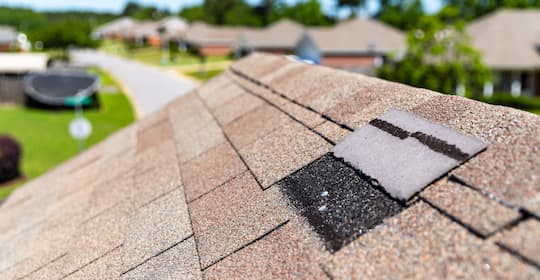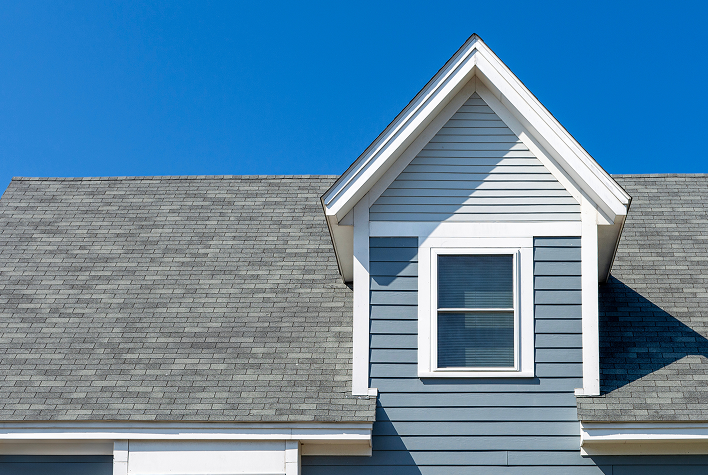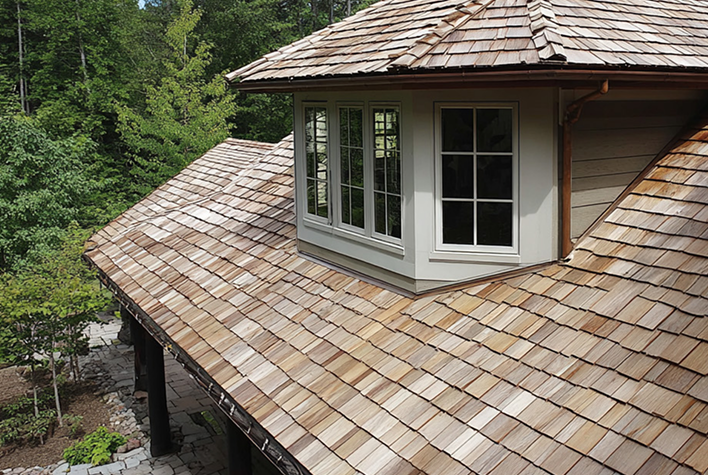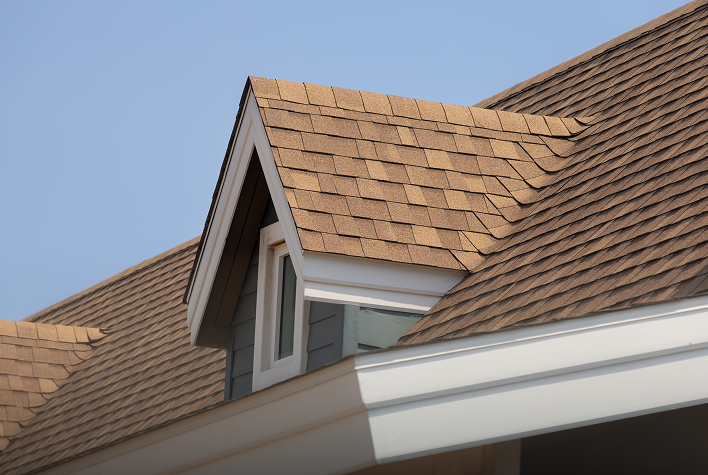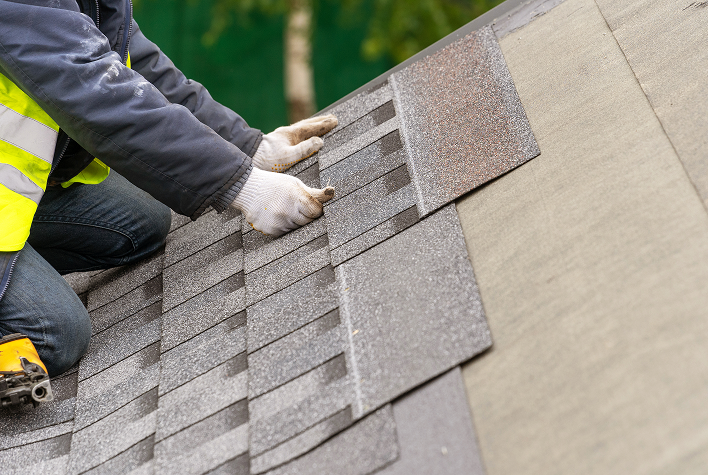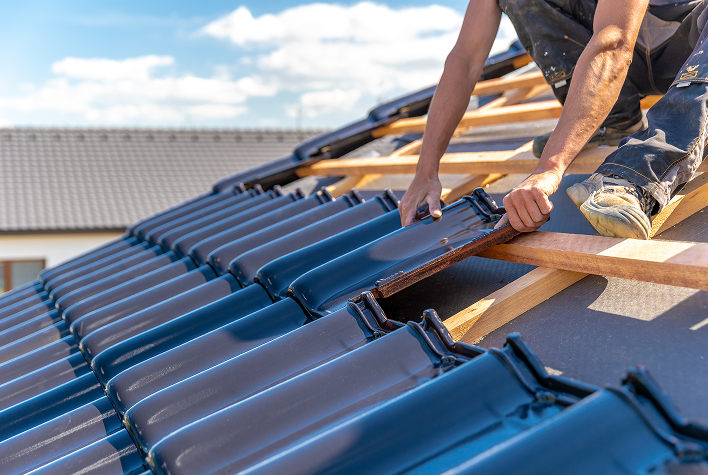
Key Points
- Roof repair costs can vary widely, typically ranging between $16,000 and $64,000, depending on the extent of the damage and the materials used.
- Larger homes or complex roof designs naturally fall on the higher end of this range.
- The final cost depends on several factors, including the type of repair, roof size and slope, location, accessibility, and roofing material.
- Additional elements such as underlayment replacement, flashing repairs, or structural reinforcements can also impact the total price.
- Common signs that your roof needs repair include missing or cracked shingles, leaks, sagging areas, mold or moss growth, and visible water stains on ceilings or walls.
Average Roof Repair Cost
Knowing the average roof repair cost can help you budget better and steer clear of unexpected expenses. Here’s a detailed overview of what to expect when fixing your roof.
Type of Repair
The type of repair significantly affects the cost to fix a roof. Here’s how:
Roof Material
The type of roofing material greatly impacts the repair cost, as prices, installation difficulty, and durability vary for each material.
- Roof Material TypeAverage Repair Cost
- Asphalt Shingles$875
- Metal Roof$1,580
- Composite Shingle Roof$900
- Tar and Gravel Roof$300 - $1,000
- Rubber or PVC Roof$400 - $1,200
- Slate Roof$1,625
- Wood Shakes$750
- Tile Roof$1,350
Roof Size
Roof size significantly affects repair costs since larger roofs need more materials (shingles, underlayment) and labor. Bigger roofs take longer to fix, which increases labor expenses.
In short, the larger the roof, the more materials, labor, and effort required, driving up the overall repair costs.
Pitch/Design
Roof pitch and design significantly affect repair costs due to accessibility and complexity. High-pitch (steeper) roofs are more difficult to navigate, requiring extra safety equipment and time, which increases labor costs. Similarly, complex designs with valleys, ridges, or dormers add to the challenge, requiring more skill and materials. Steep or intricate roofs also result in more material waste due to the need for precise cutting. In short, higher pitches and complex designs drive up both labor and material costs for repairs.
Labor
Labor costs for roof repairs depend on the material, roof complexity, and extent of the damage. Features like complex designs, steep slopes, and skylights can drive up these costs.
Basically, the longer the repair takes, the higher the labor charges. Roofers typically charge between $35 and $90 per hour for their repair services.
Other Potential Cost Factors of Roof Repair
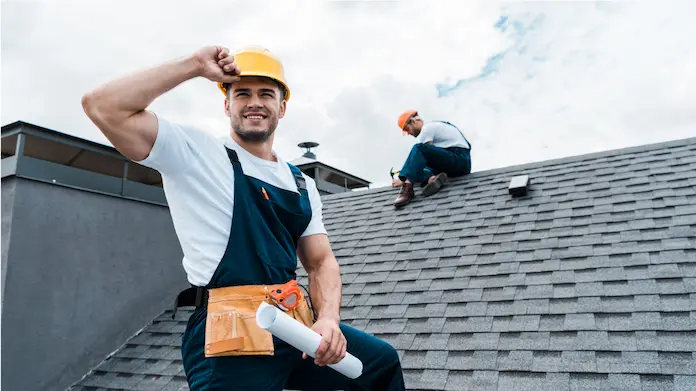
In addition to the most common ones above, let’s explore other cost factors that could impact your roof fixing price.
Time of Year
During peak roofing season in spring and summer, costs are higher due to increased demand. In the off-season, like fall or mild winters, you can get a 10-15% discount. Winter repairs are generally more expensive because snow and ice make the work riskier, potentially increasing costs by up to 100%.
Warranties
Roof warranties can influence repair costs by determining what is covered. A non-prorated warranty covers the full repair costs for a set period, helping to lower your expenses. On the other hand, prorated warranties cover less as time goes on, increasing your out-of-pocket costs. Additionally, exclusions, such as damage from natural disasters, can also affect repair expenses, making it an important factor to consider.
Location
Location plays a major role in roof repair costs because of factors like climate, local labor rates, material availability, and regional regulations.
In areas with extreme weather (such as heavy snow, storms, or intense heat), more durable materials and specialized labor may be needed, driving up costs.
Urban areas often have higher labor rates and permit fees than rural locations. Additionally, material costs can vary based on how close you are to suppliers or distribution centers.
Permits
Permits can greatly affect roof repair costs, as many regions require them to ensure the work meets local building codes and safety standards. Fees typically range from $100 to $500, depending on your location and the scope of the repairs.
Skipping permits can lead to fines, delays, or even a shutdown of the project, so it’s always best to check with your local authorities first.
Roof Features
Roof features like chimneys, skylights, dormers, valleys, and vents can significantly increase repair costs. These elements add complexity, requiring extra labor and materials to work around or integrate into the repairs.
Simply put, the more features a roof has, the more time, effort, and materials will be needed, which will increase the overall cost.
Roof Replacement vs. Repair

When deciding between roof replacement and repair, you should consider these points:
When to Repair
When to Replace
Keep in mind that repair works best for small, localized issues, while replacement is ideal for older roofs or widespread damage.
How to Reduce Roof Repair Costs?
To reduce roof repair costs, here are some practical and effective money-saving tips for you:
Should You Repair Your Roof Yourself or Hire a Professional?
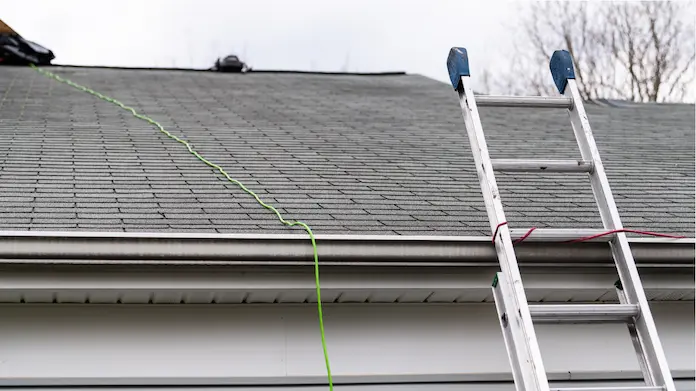
DIY repairs can help you save money and offer flexibility, but come with risks like safety hazards, lack of expertise, and the potential to void warranties. Mistakes can lead to further damage and increased costs.
Professionals bring experience, safety equipment, and quality workmanship, ensuring repairs meet industry standards. While hiring a professional is more expensive, it often provides peace of mind and long-lasting results.
DIY is fine for minor issues if you have experience, while complex repairs should be left to professionals.
How to Hire a Professional?
To hire a professional roofer, start by getting referrals from friends or family. Look into each contractor to confirm they are licensed, insured, and have good online reviews.
You can also set up meetings with potential roofers to go over the project, ask questions, and get references.
Make sure to get several quotes, but don’t choose solely based on price – prioritize quality and trust. Your contract must outline all details, like materials, payment, and warranties.
Furthermore, you can use a tool like HomeBuddy to quickly find a professional local roofer who can answer your project-related questions and even offer a free quote.
Conclusion
The average roof repair estimate ranges from $150 to $8,000, depending on factors like the type of repair, roofing material, roof size, design, and labor.
While you can save money by DIYing, it’s best to hire a professional for the job to ensure it’s done safely and correctly, avoiding future costly repairs. You can always use a tool like HomeBuddy to find a local roofing contractor and even get a free estimate.
Frequently Asked Questions
How do I know if my roof needs replacing?
Signs your roof needs replacing include missing, curled, or cracked shingles, leaks or water damage inside, sagging roofline, moss or mold growth, granules in gutters, and a roof age of 20+ years. A professional inspection can confirm the roof’s condition.
What are signs you need a roof repair?
Signs you need a roof repair include missing or damaged shingles, water stains on ceilings or walls, leaks, sagging roof areas, increased energy bills, mold or moss growth, and granules in gutters. Prompt repair can prevent more extensive damage.
How long does a roof last?
A roof’s lifespan varies by material – asphalt shingles last 15-30 years, wood shingles 20-40 years, metal roofs 40-70 years, and clay or slate tiles can exceed 50 years. Regular maintenance and weather conditions also impact longevity.
Does homeowners insurance cover roof repairs?
Homeowners insurance typically covers roof repairs if the damage is due to sudden, accidental events like storms, fire, or vandalism. It usually doesn’t cover damage from general wear and tear, neglect, or poor maintenance. Be sure to review your policy for detailed coverage information.
What are the benefits of repairing a roof?
Repairing your roof offers several benefits, such as extending its lifespan, improving energy efficiency, enhancing your home’s curb appeal, preventing further property damage, and saving on future costly repairs. Timely repairs can also keep you and your family safe from hazards like mold growth and leaks.
